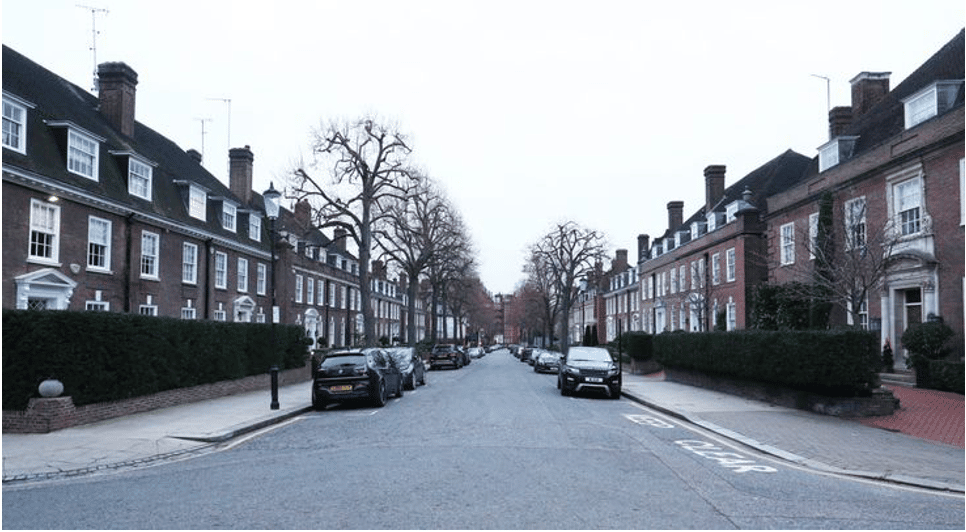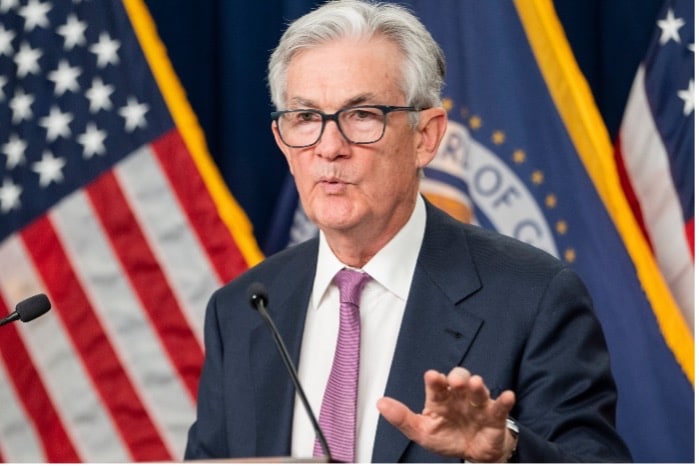Government policy has always been designed to support the housing market. Until now, that is.

After spending most of 2022 warning that a UK house price correction was on the cards — please read here for some light reading — it appears that institutions are finally on the case. Lloyds, the UK’s largest mortgage lender, feels average house prices will fall by 7% in 2023, half-way between Nationwide’s best prediction of 5% and Santander’s 10%.
Of course, these banks all predicted slight falls after the pandemic crash in 2020, so these forecasts should perhaps be taken with a pinch of salt. But one thing is clear: ONS data shows that the average UK house price stood at £294,000 in December 2022, just £2,000 from the November record high of £296,000. For context, this figure was £157,200 in 2009.
But it’s not just the banks — respectable analysts including John Stepek and Merryn Somerset Webb consider a 40% fall possible.
The purpose of this article is not to talk specifically about interest rates and inflation. But briefly, Citi thinks that CPI inflation, currently in the double-digits, could fall to 2% by the end of the year — yes, the same Citi which, in August, was laughably predicting 18.6% inflation by January.

The base rate is now at 4%, and while analysts think a rise above 5% is unlikely, the UK’s Bank of England has its hands tied by the trajectory of the Federal Reserve, whose Chair Jerome Powell has made clear further rises are to be expected.
One fact I consider pertinent right now is that today’s first-time buyer purchasing a £300,000 home with a £30,000 deposit with a typical interest rate of 5.75% would face repayments of over £1,500 per month. That’s £18,000 per annum on the mortgage alone, perhaps £24,000 of pre-tax income. This is simply unaffordable to vast swathes of middle England, where the average salary in 2021 for full time work was £38,131.
Using slightly different figures, Schroders analyst Duncan Lamont argues that house price affordability hasn’t been this bad since 1876. For perspective, this was the same year that the Elementary Education Act prevented the employment of children under 10.
And in the past, an unsteady housing market has been met with unflappable government intervention. Consumer perception is that faced with cold hard reality — the cessation of ultraloose monetary policy, an insanely inflated asset bubble, and rising rates — there will be intervention on a similar scale to the furlough scheme or energy support.
This is a misguided view in my opinion. The government did not step in to stop the fall in 2008, nor the falls in the 1990s. Even if it wanted to, it does not have the financial firepower to underpin the housing market — pumping cash into the market, introducing a stamp duty holiday, or offering state-backed lower mortgage rates will further fuel inflation, forcing the BoE to simply increase rates further.
Indeed, government policy seems to actively be targeting reducing house prices.
House price crash: government policy
What’s striking in the conversation — so far anyway — about the trajectory of UK house prices, is the lack of government support to prop up the market. In the past, it’s been priority number one, but this no longer seems to be the case.
For perspective, homeownership rose from 55% in 1979 to 71% by 2003, fuelled by right-to-buy legislation seeing council housing units fall from 6.5 million in 1980 to just 2 million today. In addition, Mortgage Interest Relief at Source (MIRAS) was available between 1983 and 2000 at various rates, allowing mortgagees to claim tax relief on mortgage interest payments.
Accordingly, the decade between 1998 and 2008 saw mortgage lending increase by 400%. And after the crash, rates fell below 1% and stayed there until December 2021, fuelling the housing bubble. Much of the £140 billion of forced pandemic savings — ONS figures — as a result of lockdown policies and furlough saw its way into the market, and fuel was added to the fire by the stamp duty holiday between June 2020 and September 2021.
But current government policy seems almost designed to allow the market to crash. In ordinary times, major high street lenders forecasting falls would be akin to klaxons sounding. Instead, the help to buy scheme, which has also pumped-up prices by allowing FTBs to purchase with a 5% deposit, is ending in March.
Replacements include Generation Buy — currently a soundbite, and the First Homes Scheme, which while very generous, has only seen a handful of properties sold compared to demand. And the Mortgage Guarantee Scheme has seen just 30,000 successful applicants.
But the key damage is being done in the buy-to-let sector — always an easy political target. For context, this is not a political opinion, merely an economic viewpoint.
Consider the typical UK landlord. Government figures shows that 45% own only one property, and 85% between one and four.

To start with, there’s the small matter of collecting the rent on that one property. There is a cost-of-living crisis, courts crisis, and a housing crisis. Tenants who cannot afford their rent and are likely facing rent rises in step with mortgage increases, will simply not pay it.
Their landlord then faces evicting them, which can take up to six months, and the tenant has been told to stay put as long as possible. Leaving early means making themselves intentionally homeless and therefore unqualified for council housing. There’s nowhere else affordable to rent, and so they will do everything possible to stay.
Meanwhile, the landlord is still on the hook for the mortgage, and also for repairs that have become more costly with inflation. If there is a profit to be made from the rent, then the higher ratepayers who are most likely to be landlords face a 40% tax bill. This landlord also has to put up with constant negative changes to taxation. He can no longer deduct mortgage interest payments from rental income before paying tax. Instead, the sum has only qualified for 20% relief since 2020.
Further, capital gains tax at 28% will soon apply to the entire gain made when the house is sold, as the CGT allowance is rapidly reduced from the current £12,300 to £3,000 by the 2024 tax year.
On top of this, strict housing regulations are coming. To start with, all rental properties in England and Wales will need an EPC rating of C or above, applying from 2025 for new tenancies, and to all by 2028. Interestingly, this does leave a good chance of very good rental rates available for new long-term tenancies just before the legislation comes into force — with some speculation that landlords will sign long-dated tenancies to avoid the new regs.
There is an affordability exemption where EPC C would not be technically possible or would cost more than £20,000. But a landlord looking at a £15,000 bill will in all likelihood simply sell up, reducing the available pool of homes available for renters.
There’s also the Renter’s Reform Bill, a proposed piece of legislation designed to scrap section 21 no-fault evictions, create a landlord register, make it illegal to refuse tenants in receipt of benefits, and make it easier for local authorities to enforce renters’ rights.
In addition, there’s Awaab’s law, which sets deadlines for social landlords in England and Wales to tackle hazards. The law was named for a two-year old who was killed by mould in a social housing property, to prevent it from happening again.
Citizens Advice analysis on 2,000 renters suggests that more than 50%, or 2.7 million households, are struggling with excessive mould, cold, and/or damp. There is a strong chance that this legislation could extend to the private sector.
There’s also increasing hostility to second home ownership in general, with multiple councils cracking down by steeply increasing council tax due and refusing applications for AirBnB rentals.
To be clear, these reforms are welcome. Insulated homes free from mould, where tenants enjoy better protections, is no bad thing. But this will incur heavy expenses to the typical landlord, many of whom will simply choose to sell, and stick the cash in a savings account for a guaranteed 5% return instead of risking their financial security on their tenants — which regardless of references often involves the luck of the draw.
For context, 4.6 million homes are privately rented in the UK.
And with no government support coming to prop up either homeowners or buy-to-let, a 40% drop seems perfectly reasonable. The only question is how much of this drop is accounted for by inflation.
This article has been prepared for information purposes only by Charles Archer. It does not constitute advice, and no party accepts any liability for either accuracy or for investing decisions made using the information provided.
Further, it is not intended for distribution to, or use by, any person in any country or jurisdiction where such distribution or use would be contrary to local law or regulation.